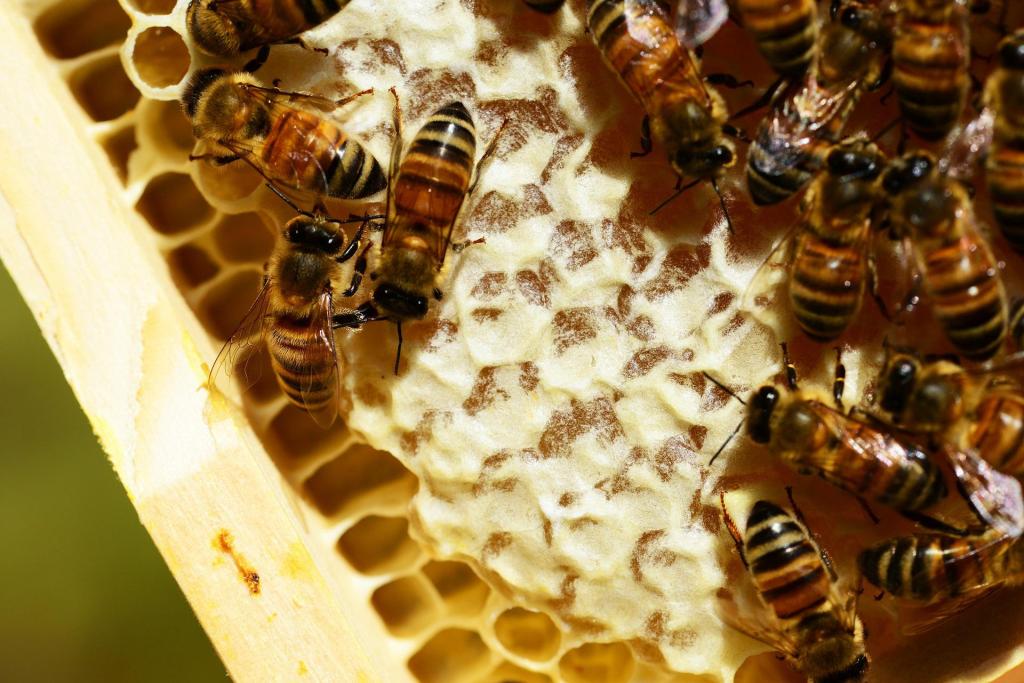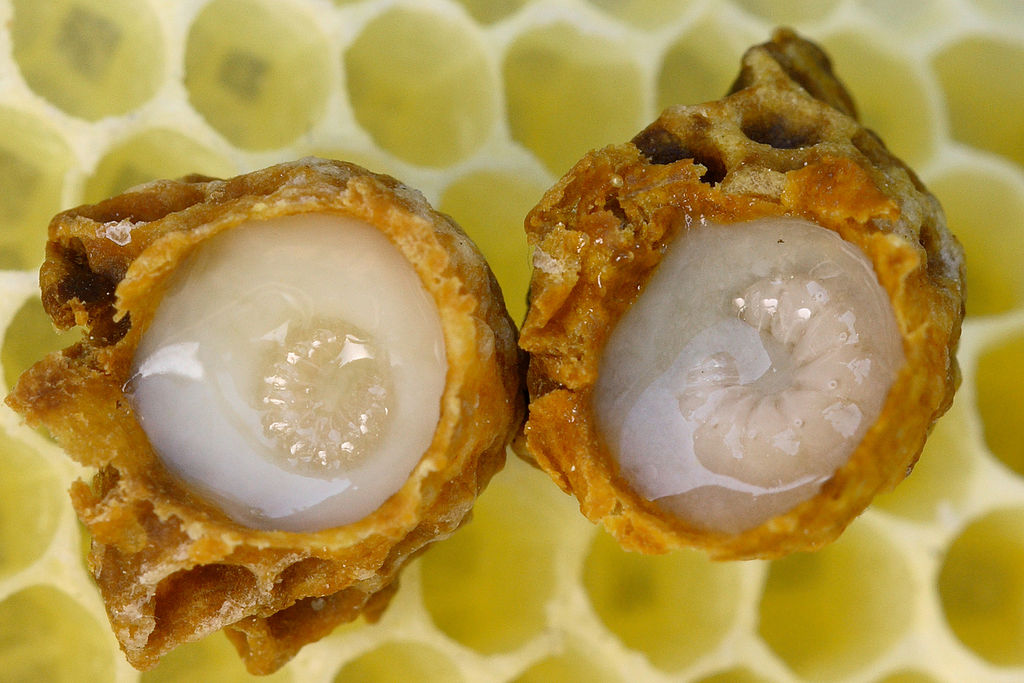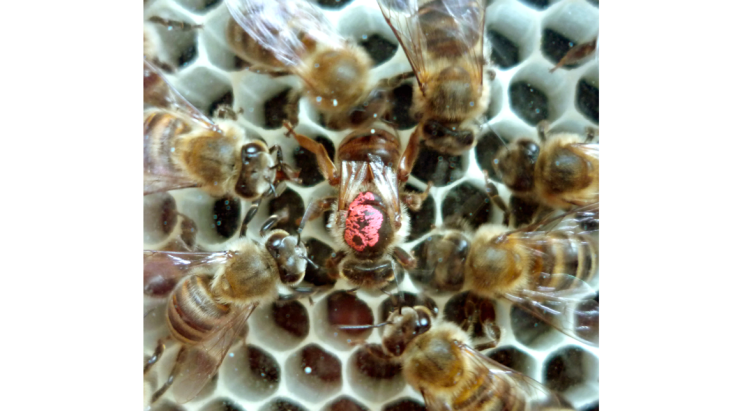As Britain celebrates the Platinum Jubilee of Elizabeth II, HOPE For the Future Community Engagement Officer, Hayleigh Jutson takes a look at the queen at the heart of every honey bee hive and find out why royal jelly is crucial to her reign.

Social bees are species that live together in groups called colonies. These colonies are very structured, with different bees having specific roles. Social bees include honey bees and many species of bumblebee. A queen bee is the only bee in a hive of social bees that produces eggs. Larvae will hatch from these eggs and develop into adult bees, so the queen bee will be the mother of most of the bees in the hive.

The queen bee governs the colony. Most of the other bees are female worker bees and nurse bees. Workers are responsible for foraging, caring for the nest looking after the rest of the colony. Nurse bees raise the queen’s offspring, who are also their sisters. All these female bees develop from fertilised eggs. Later in the year, the queen starts to produce some male bees called drones. These drones develop from unfertilised eggs. Their only job is to mate with queen bees. They don’t even feed themselves! Instead, the female workers have to feed them.

Towards the end of summer, as well as producing unfertilised males eggs, the queen bee also lays some eggs in specially constructed queen cells. What makes these specially chosen individuals grow-up to be queen is a substance called ‘royal jelly’. This is a milky secretion that comes from glands within the heads of nurse honeybees. While all the bee larvae receive some royal jelly in the first few days after hatching, the one selected to be queens are fed large amounts of it from their larval stage to adulthood. A special protein in the Royal Jelly called ‘royalactin’ enables the larvae to develop ovaries so they can produce eggs and, perhaps become queen of their own hive.
Queen Bumblebees
Queen bumblebees overwinter underground, and are usually the first to emerge in early spring. When the queen bees awake from their long slumber, they are extremely hungry and in a hurry to start a new colony of their own. The queen begins by feeding on early-blooming wildflowers and tree blossoms, which provide her with all the nutrition she needs with protein-rich pollen, and high-energy nectar.

Once she has filled up on all the nutrients she needs, the queen will then find a suitable nest site. Different species choose different sites. She will collect a ball of pollen and lay her first batch of eggs inside it. Bumblees incubate their eggs, like birds do, and even have a bald-patch on their abdomens, to ensure suitable distribution of their body heat over their eggs. The queen builds a store of honey to feed from, while she does this. When they hatch, the larvae eat their way through the pollen and the queen continues to care for them, until they are fully-grown adults.
If you are interested in bees, have a look at our post about the red-tailed mason bee. She is a solitary bee who chooses a very unusual place to lay her eggs.
Hayleigh is working with the HOPE project team to develop and deliver a programme for working with intergenerational groups in the community and making the Museum an Age Friendly space for older people. She wants “museums to be a space for all to enjoy and develop their sense of wonder and imagination, no matter what age they are”.



[…] We hope you have fun measuring bees. You can measure as few or as many as you like; it all provides useful data for bee researchers. If you’re interested in bees, you might want to take a look at our post on queen bees. […]
LikeLike
I am interested in knowing more about the royal jelly, thank you.
LikeLike
Dear Damina,
Thanks for your question about Royal Jelly. We think that this article from the Australian Academy of Science is quite good.
I hope that helps!
Best wishes,
Rodger
LikeLike